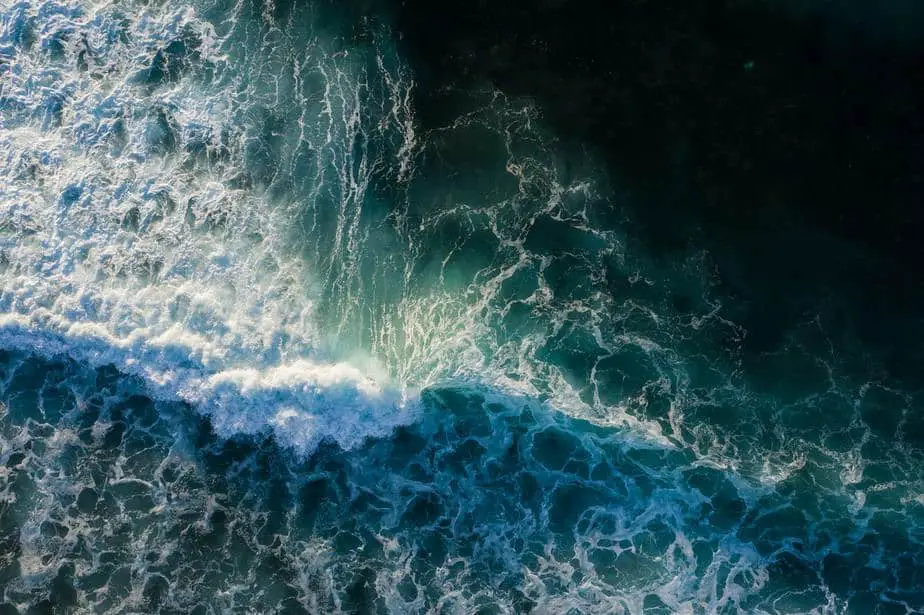We all want to have nice sunny weather when we go on vacation, especially if our destination is a tropical destination. But what happens when the weather conditions aren’t perfect? What if there is a little bit of rain or if it’s windier than usual?
Some destinations have idyllic weather year round where it’s always warm, the waters are calm with great visibility, and sheltered areas to ensure that the peace remains. However, if you’re not snorkeling at some tropical paradise, then you will have to deal with some real-world consequences of suboptimal weather at times.
Snorkeling is greatly impacted by the weather, and wind in particular. It’s possible to snorkel with a bit of rain and wind, but wind can make snorkeling dangerous. A 10 mph wind can cause wave heights to reach 2-3 ft tall. After that, the currents and tides can make a wave even bigger. If you’re an experienced snorkeler, then a good upper limit for snorkeling is at wind speeds of 19-24 mph which can produce waves as high as 6-10 ft.
With that said, there are many parameters to consider, such as if you’ll be snorkeling in a sheltered bay, what your snorkeling experience is, what kind of equipment you have, and so on. In this article, we will thoroughly discuss what it’s like to snorkel when it’s windy, when you can do it, and when it’s simply too dangerous.
How much wind is too much for snorkeling?
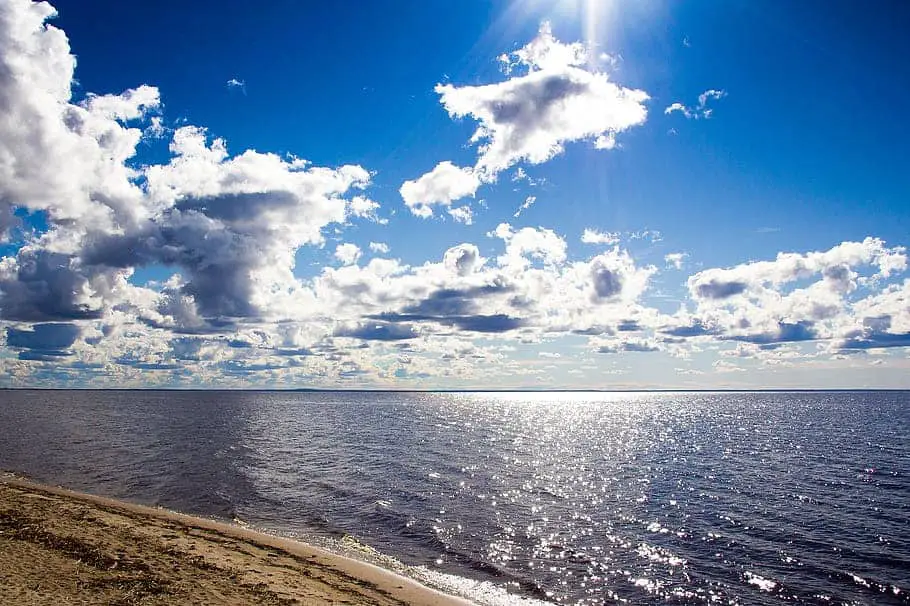
No matter what, there will always be some wind. The question is how much wind is too much for snorkeling?
Like currents, wind shipping across the sea can toss you around, so the first thing to determine is wind direction. If you are being blown towards the beach, then that might be fine. However, an offshore wind will be blowing you further out to sea. To be fair, the wind itself would have to be really strong, however the wind can also affect the waves.
To determine how much wind affects wave heights, we refer to the Beaufort scale. The Beaufort is a scale for wind with a range of numbers from 0 to 12. A 0 indicates that the wind is calm, with a 12 indicating a hurricane with winds over 73 mph. Sailors are very familiar with this scale, and now you are aware of it too.
A 5 on the Beaufort scale is defined as a fresh breeze with wind speeds of 19-24 mph (17-21 knots) which can produce waves with a height of 6-10 ft. This is when the fabled “white horses” can begin to appear on wave crests. This is probably the upper limit for snorkelers; if the winds were any faster or the waves any bigger, you would be tossed around and drained of energy very quickly.
With a 4 on the Beaufort scale, the waves will be around 3.5-6 ft high and this is a perfectly acceptable condition to snorkel in. Be wary of swells as long as it’s a shallow swell.
If you’re not a strong swimmer, then wind speeds reaching 10mph and producing 3 ft tall wave swells might already be a little uncomfortable. Even 2 feet swells might be too much for an inexperienced snorkeler.
For those of you just starting out, we recommend staying in shallow water in a sheltered bay or pool area where the wind will not have much of an impact on the waves.
Why might windy conditions make snorkeling difficult?
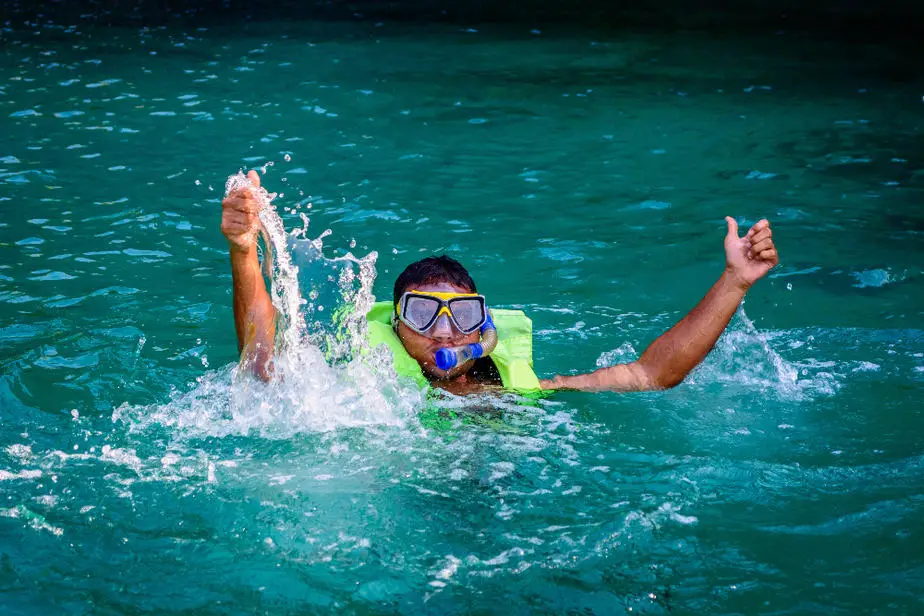
There will never be a time when there’s no wind, and the windier it gets, the harder or less enjoyable some aspects of snorkeling becomes.
For instance, if you have a classic open-top snorkel and it’s windy out, then waves and spray caused by the wind can make it more likely for water to enter your snorkel. This may cause you to accidentally swallow water, or at the very least, to clear the snorkel more often.
If the waves and swell are significant, you may be tossed around uncontrollably. This is particularly dangerous because you might get thrown onto corals or rocks. Even just a simple up and down motion can cause seasickness if you are subjected to it for long enough.
Furthermore, the wind can cause surface current to form which means you either need to swim against it which is quite difficult, or you will be carried along with it which can take you very far from the shore or push you back to it.
When you’re snorkeling with a buddy and want to speak to them, the waves and spray caused by the wind can cause the water to end up in your mouth. If you need to remove your snorkel mask for some reason, make sure to turn your back to the waves, otherwise the water will spray your face.
These are some of the reasons why snorkeling might become more unpleasant. If the conditions worsen, then it may even be too dangerous to snorkel.
Why too much wind is dangerous
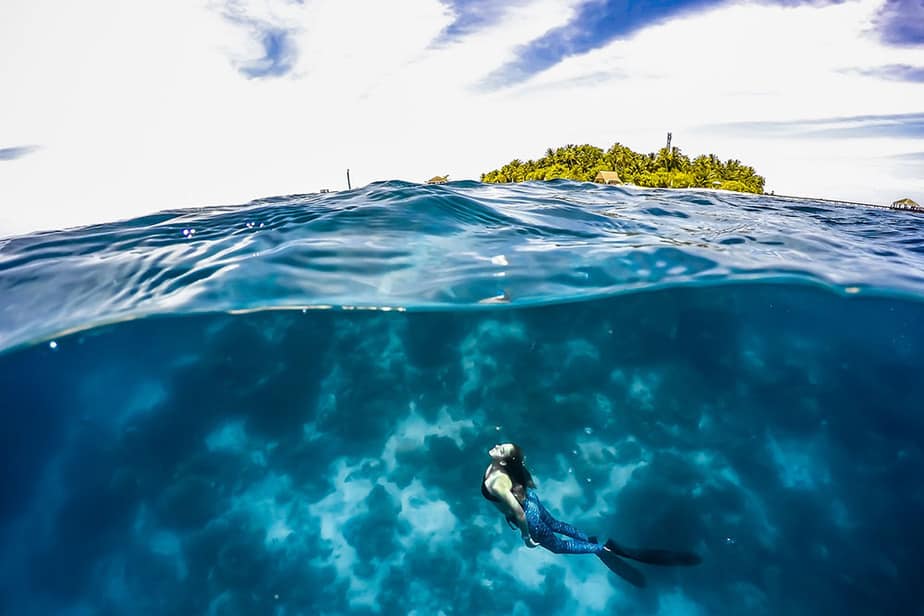
Typically the wind itself is not dangerous. However, it’s what the wind can do to the waves that can cause some problems. We discussed above that strong winds lead to bigger swells which makes it difficult to snorkel.
If the swell is only a few feet tall, this is considered mild conditions where most can easily snorkel in it. However, the swell can induce nausea in some people who are more susceptible to motion sickness.
Larger waves from fast winds can also cause stronger rip currents, and cause boat travel to feel more choppy, which exacerbates the feelings of nausea one might feel.
We recommend having a chat with a local dive shop or tour company to get their thoughts on the current wind conditions. If they think the wind conditions can make it difficult to snorkel, then you should probably heed their advice.
The wind conditions don’t just affect the waves at the snorkeling area, but if you signed up for a snorkeling tour, then the operator needs to figure out if the winds will make the boat ride out too choppy or unsafe.
Another factor for the boat operator is that reefs and corals are often found on shallow bars and they don’t want to crash into them due to the wind conditions.
Lastly, keep in mind that the wind speed is technically measured in knots, not mph, so you need to be clear on the differences when looking up the wind speed. For instance, 20 knots is 23 mph, which is pretty close, but if you misread it as 20mph, then you will be in for a slight surprise.
Why a snorkeling tour can be cancelled due to rough winds
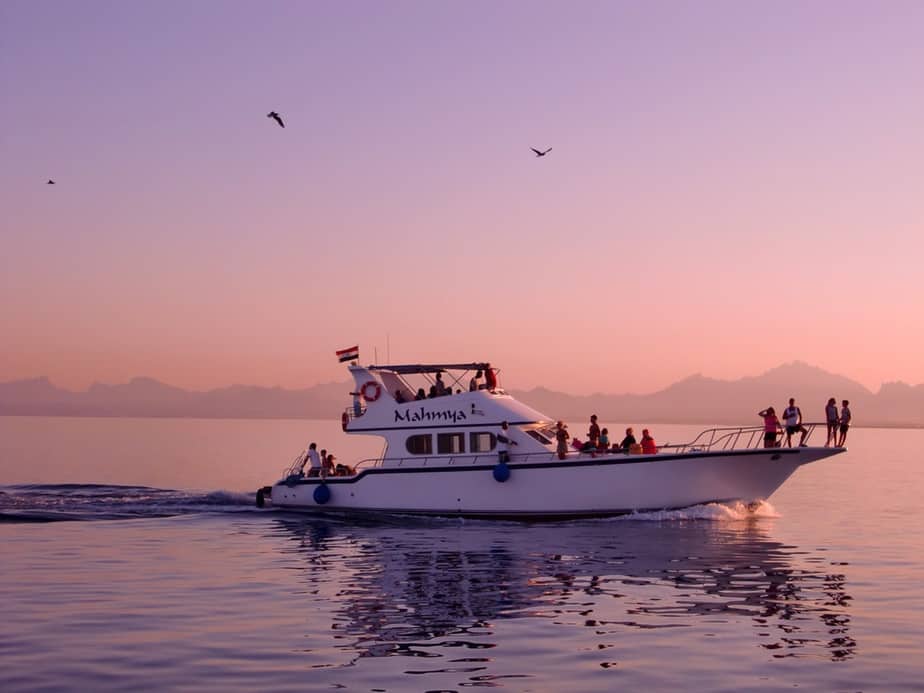
When it gets too windy, your snorkeling tour may be in danger of getting cancelled. We’ll discuss the reasons why below.
First, a strong wind can cause swells that can also kick up sediment and reduce visibility in certain areas. Technically, one could still snorkel under these conditions, but it’d be less enjoyable and more dangerous. The water visibility is rarely that bad but tour operators can sense when a snorkeling trip wouldn’t be worthwhile if it ever is.
Second, even if you’re an avid snorkeler and strong enough swimmer that the rough conditions don’t deter you, a snorkeling tour operator must cater to the weakest link. No one should be left behind. By not considering the inexperienced snorkelers in the group, an accident would more likely occur when it’s windy and that is unacceptable.
Third, as we mentioned, even waves that are 2-3 feet in height can start to make it uncomfortable to snorkel in. Plus, the more swells there are, the harder it is for the boat crew to keep their eye on snorkelers which increases the chances of a boating accident or someone getting lost.
Fourth, when it’s calm the boat ride out will be a lot smoother, with only gentle rocking that should not be of any concern. When there are swells from the wind, the boat motion can be so drastic that it can cause motion sickness. Plus, it makes jumping off and getting on the boat much riskier, particularly for new snorkelers.
Whenever a snorkeling tour operator cancels a tour, instead of being disappointed at them, ask yourself: was it going to be a fun and safe experience if they had tried to make it work? Why would they decline an opportunity to make money from paying customers? Chances are it would have been disastrous and they had no choice.
How do I know if it’s going to be windy?
So now that you know how much wind can affect snorkeling, it’s a good idea to check the weather forecast so you know what to expect before going out. If the wind conditions are too much, then you can make alternative plans or cancel the trip altogether.
Since our concern is primarily the wind, you should look at specialized apps designed for windsurfing and other similar water sports. For instance, Windy and Windfinder provide local information about the wind conditions nearby and it even includes information about waves and swell.
If you find these apps too confusing, then you can do it the old fashioned way and speak to some people. The locals ought to know the area the best. Ask dive shop employees, snorkeling tour operators, or someone just coming out from the water. They can give you the most recent information and you can decide for yourself if you still want to snorkel or not.
Tips for snorkeling when it’s windy
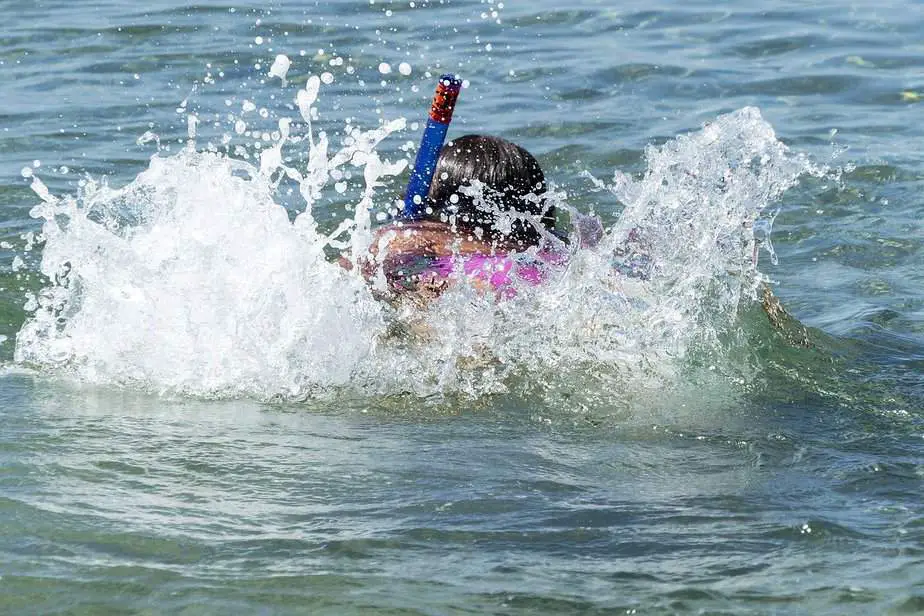
Putting everything together, here’s how you can safely snorkel even when it’s windy.
Starting off, the snorkeling location is extremely important because some areas are greatly affected by wind, and some areas are not affected much or at all. For instance, the open waters are the most affected by wind, and a sheltered bay will basically be unaffected.
Next, we recommend getting a semi-dry or a dry snorkel. These have a splash guard over the opening which keeps most of the water out. A dry snorkel takes it a step further and will automatically seal the tube opening with its float valve if it ever gets submerged underwater.
If you are still using an open-top snorkel, then you need to be very careful with how you breathe. You should always be breathing in deep and slow, but this advice is especially pertinent on windy days. If water sprays into the tube, breathing slowly decreases your chances of choking on it. You are also in a better position to clear your snorkel.
Moving on, you should always be wearing some kind of buoyancy aid. A beginner should wear a life jacket and an experienced snorkeler should wear a snorkel vest. Snorkel vests can be inflated and deflated which gives the wearer more control. If they want to skin dive, they can deflate their vest and do so. A life jacket stays afloat all the time because it is a life-saving device, not necessarily a device used for snorkeling.
When you’re swimming out into the water, and there are currents, make sure you are swimming into the current. This basically means that on the return trip, the current will be assisting you. If you swim with the current at the start, when you return you will be fighting it when you’re fatigued and this can be difficult.
At any point while snorkeling, if you need to remove your mask or snorkel, face downwind first (away from the waves and wind). This will decrease your chances of getting sprayed in the face.
The weather and water conditions are always changing, and if it becomes too severe, then it’s a good idea to stay near the exit point. You must be paying close attention to your surroundings at all times otherwise you will not notice the changes in the environment.
Parting words
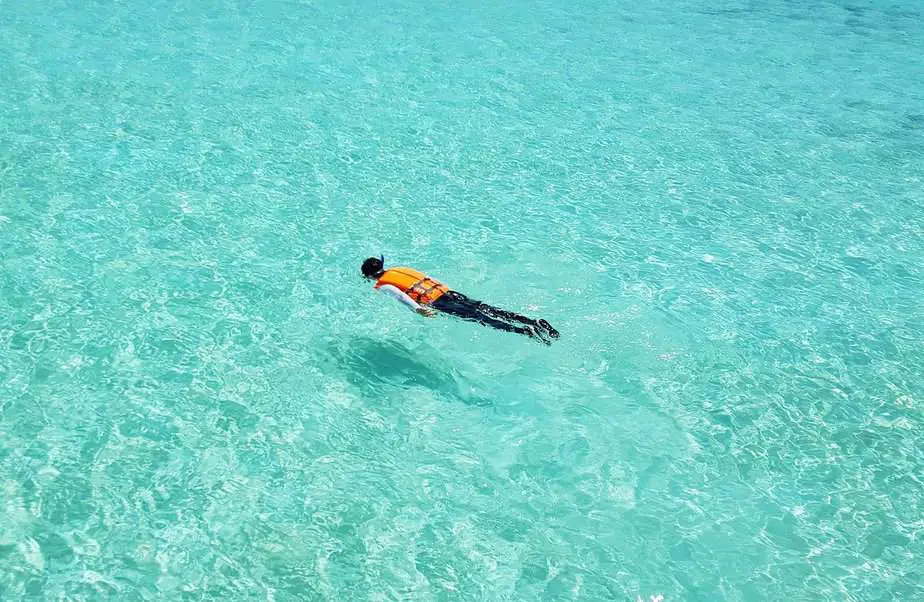
Snorkeling can be a very calm and relaxing experience – if the weather is on your side, that is. If mother nature isn’t cooperating, then you will be in for a rough time.
One of the considerations you need to make to go snorkeling is whether the wind conditions are good enough. There will always be wind, so don’t let the presence of any wind at all be a deterrent. In fact, a “perfect” day where there is no wind doesn’t exist.
Winds of over 10mph can result in waves around 3 ft in height and the water surface can feel like you’re being tossed around. We recommend using a dry snorkel and possibly even taking some seasickness medicine to combat this.
The snorkeling location plays a big part in how much of a factor wind will play in the experience. In a sheltered area such as a bay, the water will basically be calm all the time. If you’re snorkeling by the shore, the onshore wind on one side of an island might be too much, whereas on the opposite side it may be calmer, though you would have an offshore wind to deal with.
All in all, yes, you can snorkel when it’s windy. It depends on how windy it is, where you are snorkeling, and how experienced you are.

